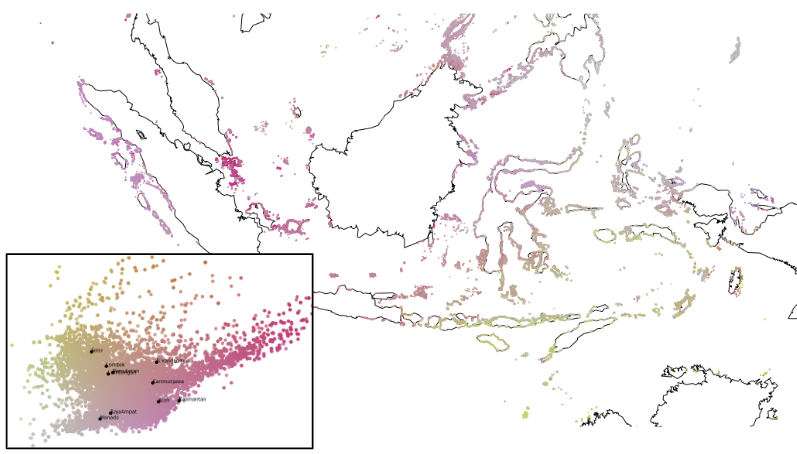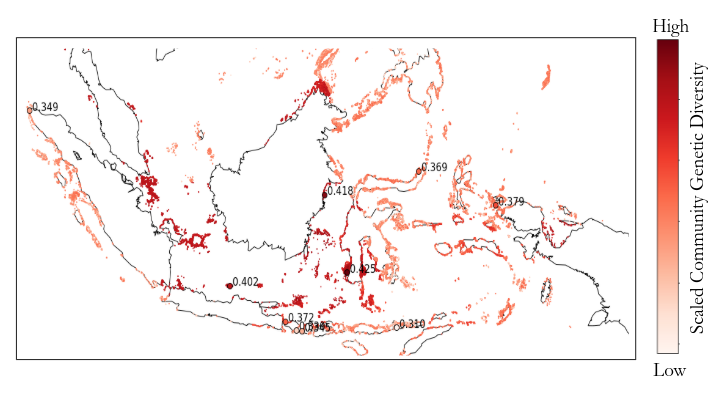Promoting Social-Ecological Resilience
SKEL
Communities assemble in a geographic and environmental context. But to what degree do shared geographic and environmental contexts dicatate the community structures we observe today? As part of my research program I seek to understand how community genetic diversity is structured across spatial scales and environmental gradients.
Characterizing environmental conditions
My initial investigations are driven by a collaboration focusing on Coral Triangle decapod communities. We first characterized local environmental conditions by collapsing marine environmental variables into PC space, which is illustrated in the following figure.

The inset shows the total environmental space of the region collapsed into the first two PCs, and also indicates the environmental space occupied by the ten sampling locations of the observed decapod communities. The larger panel shows the environmental PC space projected across the whole landscape, clipped to the locations where corals are known to exist. Here we see that the environmental space of the Coral Triangle is quite broad and that the space occupied by the sampled communities covers a significant fraction of this environmental space.
Using machine learning to predict community structure across the landscape
Now, given that we know the distribution of genetic variation within the observed decapod communities, we use this information, along with environmental correlates, to predict the distribution of genetic variation of decapod communities at unobserved locations across the landscape. To this end we developed a machine learning inference procedure which we trained on the observed data and generated the following map of projected community genetic structure across the Coral Triangle.

This map is a first step to identifying Coral Triangle decapod communities which may be either genetically buffered against or vulnerable to incipient climate change. Further work can be guided by these results to improve the inference by targeting unsampled environmental space. Importantly, this work can also be extended to investigate how communities across different taxonomic levels are structured by environmental conditions, and whether they are similarly impacted by fluctuations in local environmental conditions.
